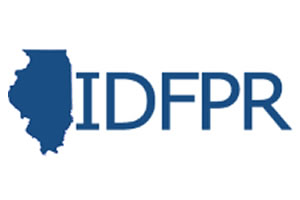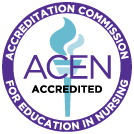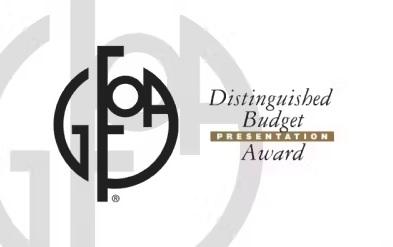Institutional Accreditation
Institutional accreditation affirms the quality of the institution as a whole and ensures that minimum standards are met. Shawnee Community College is accredited by The Higher Learning Commission (HLC).
Criterion 1. Mission
The institution’s mission is clear and articulated publicly; it guides the institution’s operations.
Core Components
1.A. The institution’s mission is articulated publicly and operationalized throughout the institution.
- The mission was developed through a process suited to the context of the institution.
- The mission and related statements are current and reference the institution’s emphasis on the various aspects of its mission, such as instruction, scholarship, research, application of research, creative works, clinical service, public service, economic development and religious or cultural purpose.
- The mission and related statements identify the nature, scope and intended constituents of the higher education offerings and services the institution provides.
- The institution’s academic offerings, student support services and enrollment profile are consistent with its stated mission.
- The institution clearly articulates its mission through public information, such as statements of purpose, vision, values, goals, plans or institutional priorities.
1.B. The institution’s mission demonstrates commitment to the public good.
- The institution’s actions and decisions demonstrate that its educational role is to serve the public, not solely the institution or any superordinate entity.
- The institution’s educational responsibilities take primacy over other purposes, such as generating financial returns for investors, contributing to a related or parent organization, or supporting external interests.
- The institution engages with its external constituencies and responds to their needs as its mission and capacity allow.
1.C. The institution provides opportunities for civic engagement in a diverse, multicultural society and globally connected world, as appropriate within its mission and for the constituencies it serves.
- The institution encourages curricular or cocurricular activities that prepare students for informed citizenship and workplace success.
- The institution’s processes and activities demonstrate inclusive and equitable treatment of diverse populations.
- The institution fosters a climate of respect among all students, faculty, staff and administrators from a range of diverse backgrounds, ideas and perspectives.
Criterion 2. Integrity: Ethical and Responsible Conduct
The institution acts with integrity; its conduct is ethical and responsible.
Core Components
2.A. The institution establishes and follows policies and processes to ensure fair and ethical behavior on the part of its governing board, administration, faculty and staff.
- The institution develops and the governing board adopts the mission.
- The institution operates with integrity in its financial, academic, human resources and auxiliary functions.
2.B. The institution presents itself clearly and completely to its students and to the public.
- The institution ensures the accuracy of any representations it makes regarding academic offerings, requirements, faculty and staff, costs to students, governance structure and accreditation relationships.
- The institution ensures evidence is available to support any claims it makes regarding its contributions to the educational experience through research, community engagement, experiential learning, religious or spiritual purpose and economic development.
2.C. The governing board of the institution is autonomous to make decisions in the best interest of the institution in compliance with board policies and to ensure the institution’s integrity.
- The governing board is trained and knowledgeable so that it makes informed decisions with respect to the institution’s financial and academic policies and practices; the board meets its legal and fiduciary responsibilities.
- The governing board’s deliberations reflect priorities to preserve and enhance the institution.
- The governing board reviews the reasonable and relevant interests of the institution’s internal and external constituencies during its decision-making deliberations.
- The governing board preserves its independence from undue influence on the part of donors, elected officials, ownership interests or other external parties.
- The governing board delegates day-to-day management of the institution to the institution’s administration and expects the institution’s faculty to oversee academic matters.
2.D. The institution is committed to academic freedom and freedom of expression in the pursuit of truth in teaching and learning.
2.E. The institution’s policies and procedures call for responsible acquisition, discovery and application of knowledge by its faculty, staff and students.
- Institutions supporting basic and applied research maintain professional standards and provide oversight ensuring regulatory compliance, ethical behavior and fiscal accountability.
- The institution provides effective support services to ensure the integrity of research and scholarly practice conducted by its faculty, staff and students.
- The institution provides students guidance in the ethics of research and use of information resources.
- The institution enforces policies on academic honesty and integrity.
Criterion 3. Teaching and Learning: Quality, Resources, and Support
The institution provides quality education, wherever and however its offerings are delivered.
Core Components
3.A. The rigor of the institution’s academic offerings is appropriate to higher education.
- Courses and programs are current and require levels of student performance appropriate to the credential awarded.
- The institution articulates and differentiates learning goals for its undergraduate, graduate, post-baccalaureate, post-graduate and certificate programs.
- The institution’s program quality and learning goals are consistent across all modes of delivery and all locations (on the main campus, at additional locations, by distance delivery, as dual credit, through contractual or consortial arrangements, or any other modality).
3.B. The institution offers programs that engage students in collecting, analyzing and communicating information; in mastering modes of intellectual inquiry or creative work; and in developing skills adaptable to changing environments.
- The general education program is appropriate to the mission, educational offerings and degree levels of the institution. The institution articulates the purposes, content and intended learning outcomes of its undergraduate general education requirements.
- The program of general education is grounded in a philosophy or framework developed by the institution or adopted from an established framework. It imparts broad knowledge and intellectual concepts to students and develops skills and attitudes that the institution believes every college-educated person should possess.
- The education offered by the institution recognizes the human and cultural diversity and provides students with growth opportunities and lifelong skills to live and work in a multicultural world.
- The faculty and students contribute to scholarship, creative work and the discovery of knowledge to the extent appropriate to their offerings and the institution’s mission.
3.C. The institution has the faculty and staff needed for effective, high-quality programs and student services.
- The institution strives to ensure that the overall composition of its faculty and staff reflects human diversity as appropriate within its mission and for the constituencies it serves.
- The institution has sufficient numbers and continuity of faculty members to carry out both the classroom and the non-classroom roles of faculty, including oversight of the curriculum and expectations for student performance, assessment of student learning, and establishment of academic credentials for instructional staff.
- All instructors are appropriately qualified, including those in dual credit, contractual and consortial offerings.
- Instructors are evaluated regularly in accordance with established institutional policies and procedures.
- The institution has processes and resources for assuring that instructors are current in their disciplines and adept in their teaching roles; it supports their professional development.
- Instructors are accessible for student inquiry.
- Staff members providing student support services, such as tutoring, financial aid advising, academic advising and cocurricular activities, are appropriately qualified, trained and supported in their professional development.
3.D. The institution provides support for student learning and resources for effective teaching.
- The institution provides student support services suited to the needs of its student populations.
- The institution provides for learning support and preparatory instruction to address the academic needs of its students. It has a process for directing entering students to courses and programs for which the students are adequately prepared.
- The institution provides academic advising suited to its offerings and the needs of its students.
- The institution provides to students and instructors the infrastructure and resources necessary to support effective teaching and learning (technological infrastructure, scientific laboratories, libraries, performance spaces, clinical practice sites and museum collections, as appropriate to the institution’s offerings).
Criterion 4. Teaching and Learning: Evaluation and Improvement
The institution demonstrates responsibility for the quality of its educational programs, learning environments, and support services, and it evaluates their effectiveness for student learning through processes designed to promote continuous improvement.
Core Components
4.A. The institution ensures the quality of its educational offerings.
- The institution maintains a practice of regular program reviews and acts upon the findings.
- The institution evaluates all the credit that it transcripts, including what it awards for experiential learning or other forms of prior learning, or relies on the evaluation of responsible third parties.
- The institution has policies that ensure the quality of the credit it accepts in transfer.
- The institution maintains and exercises authority over the prerequisites for courses, rigor of courses, expectations for student learning, access to learning resources, and faculty qualifications for all its programs, including dual credit programs. It ensures that its dual credit courses or programs for high school students are equivalent in learning outcomes and levels of achievement to its higher education curriculum.
- The institution maintains specialized accreditation for its programs as appropriate to its educational purposes.
- The institution evaluates the success of its graduates. The institution ensures that the credentials it represents as preparation for advanced study or employment accomplish these purposes. For all programs, the institution looks to indicators it deems appropriate to its mission.
4.B. The institution engages in ongoing assessment of student learning as part of its commitment to the educational outcomes of its students.
- The institution has effective processes for assessment of student learning and for achievement of learning goals in academic and cocurricular offerings.
- The institution uses the information gained from assessment to improve student learning.
- The institution’s processes and methodologies to assess student learning reflect good practice, including the substantial participation of faculty, instructional and other relevant staff members.
4.C. The institution pursues educational improvement through goals and strategies that improve retention, persistence and completion rates in its degree and certificate programs.
- The institution has defined goals for student retention, persistence and completion that are ambitious, attainable and appropriate to its mission, student populations and educational offerings.
- The institution collects and analyzes information on student retention, persistence and completion of its programs.
- The institution uses information on student retention, persistence and completion of programs to make improvements as warranted by the data.
- The institution’s processes and methodologies for collecting and analyzing information on student retention, persistence and completion of programs reflect good practice. (Institutions are not required to use IPEDS definitions in their determination of persistence or completion rates. Institutions are encouraged to choose measures that are suitable to their student populations, but institutions are accountable for the validity of their measures.)
Criterion 5. Institutional Effectiveness, Resources and Planning
The institution’s resources, structures, processes and planning are sufficient to fulfill its mission, improve the quality of its educational offerings, and respond to future challenges and opportunities.
Core Components
5.A. Through its administrative structures and collaborative processes, the institution’s leadership demonstrates that it is effective and enables the institution to fulfill its mission.
- Shared governance at the institution engages its internal constituencies—including its governing board, administration, faculty, staff and students—through planning, policies and procedures.
- The institution’s administration uses data to reach informed decisions in the best interests of the institution and its constituents.
- The institution’s administration ensures that faculty and, when appropriate, staff and students are involved in setting academic requirements, policy and processes through effective collaborative structures.
5.B. The institution’s resource base supports its educational offerings and its plans for maintaining and strengthening their quality in the future.
- The institution has qualified and trained operational staff and infrastructure sufficient to support its operations wherever and however programs are delivered.
- The goals incorporated into the mission and any related statements are realistic in light of the institution’s organization, resources and opportunities.
- The institution has a well-developed process in place for budgeting and for monitoring its finances.
- The institution’s fiscal allocations ensure that its educational purposes are achieved.
5.C. The institution engages in systematic and integrated planning and improvement.
- The institution allocates its resources in alignment with its mission and priorities, including, as applicable, its comprehensive research enterprise, associated institutes and affiliated centers.
- The institution links its processes for assessment of student learning, evaluation of operations, planning and budgeting.
- The planning process encompasses the institution as a whole and considers the perspectives of internal and external constituent groups.
- The institution plans on the basis of a sound understanding of its current capacity, including fluctuations in the institution’s sources of revenue and enrollment.
- Institutional planning anticipates evolving external factors, such as technology advancements, demographic shifts, globalization, the economy and state support.
- The institution implements its plans to systematically improve its operations and student outcomes.
Higher Learning Commission
230 South LaSalle Street, Ste. 7-500
Chicago, IL 60604
800-621-7440/312-263-0456
www.hlcommission.org
Program Accreditation and Approvals
Specialized program accreditation and approval is available for many of the SCC programs. It is the goal at SCC for all programs to seek and obtain these statuses, where available.
The following programs have accreditation, approval, or meet state licensure requirements.
Associate Degree Nursing
Cosmetology
 |
The Cosmetology Program is licensed through IDFPR through Fall 2022.
Mailing Address: Phone: 1-800-560-6420 |
Occupational Therapy Assistant
 |
The Occupational Therapy Assistant Program is accredited through 2028 with ACOTE.
Phone: 301-652-6611 |
Practical Nursing
 |
The Practical Nursing program at Shawnee Community College
located at the Main Campus in Ullin, IL is accredited by the:
Accreditation Commission for Education in Nursing (ACEN) 3390 Peachtree Road NE, Suite 1400 Atlanta, GA 30326 (404) 975-5000 The most recent accreditation decision made by the
ACEN Board of Commissioners for the Practical Nursing Program
is Initial Accreditation.
View the public information disclosed by
the ACEN regarding this program at
|
Truck Driving
 |
The Truck Driving Program is registered with the Training Provider Registry through FMCSA.
Mailing Address: Phone: 202-366-4000 |
Contact
Dr. Kristin Shelby
Dean of Transfer & Adult Education
618-634-3240
kristins@shawneecc.edu

